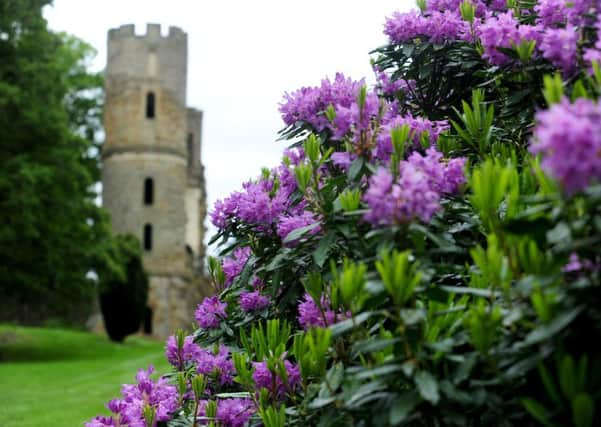Why South Yorkshire is well-placed to emulate Japanese stress-busting ‘forest-bathing’ trend - Jayne Dowle


Rather, we’re suspicious of anything – and anyone – telling us what to do. Not for nothing is gruff Sheffield actor Sean Bean our patron saint and the trenchant Barnsley poet Ian McMillan our bard.
So you might think that we wouldn’t have much truck with this Japanese idea of “forest-bathing” which the NHS is recommending to combat the stresses of modern life. That is where you would be wrong.
Advertisement
Hide AdAdvertisement
Hide AdThe practice, devised 40 years ago as part of a Japanese government initiative to improve the wellbeing of exhausted salarymen, requires walkers to breathe deeply and open their senses to the environment. It is estimated that five million Japanese regularly take part, spending time soothed by birdsong and woodland smells to revive body and spirit.
It might have been embraced by the Duchess of Cambridge, who based her recent Chelsea Flower Show garden on the health-giving properties of abundant greenery, but we’ve been walking in the woods around here for as long as anyone can remember.
I sometimes speak to people from foreign parts – such as Harrogate – who assume that anywhere south of Leeds is a grey post-industrial wasteland peppered with the odd shuttered-up pub. Think the location shots of the TV drama Chernobyl but with marginally-less radiation and Meadowhall shopping centre as the only attraction.
I’m not entirely blinded by the dappled sunlight filtering through the oak trees; it is true that South Yorkshire still has its challenges. That’s why I support the One Yorkshire devolution campaign; we are stronger together.
Advertisement
Hide AdAdvertisement
Hide AdHowever, unless you know the area, few people appreciate that hundreds of thousands of acres once given over to coal-mining and heavy industry have gradually been returning to nature over the past 30 years.
As I write this, I’m looking from my house directly at the old spoil heaps of Barrow Colliery which ceased coal production in 1985. When I was the same age as my two teenagers, the vista was dominated by winding gear and chimneys from the adjoining coking plant and the cacophony of machinery was a constant hum in the valley.
Now the view is almost totally green, wooded and this summer, resplendent with poppies in the old pit farm fields. Even when I show them photographs of the past, Jack and Lizzie find it almost impossible to imagine.
In fact, if they see me with that glint in my eye, they know they’re in for a lecture. I could look out of their bedroom windows and talk them through a thousand years of landscape, which brings me onto the important role of Wentworth Castle Gardens, which this weekend reopened under the aegis of the National Trust.
Advertisement
Hide AdAdvertisement
Hide AdIf you’re one of those unfamiliar with the beauties of South Yorkshire, Wentworth Castle is the imposing grand house on the hillside as you pass between junction 36 and 37 of the M1. The house itself is home to Northern College, an adult education enterprise, but the 63 acres of gardens and 500 acres of parkland are again open to the public.
It’s both the only Grade I-listed parkland and the first fully-National Trust property in South Yorkshire – the charitable organisation does play an advisory role at Wentworth Woodhouse, its also impressive neighbour just a few miles over the border in Rotherham.
And if you want forest-bathing, with a nice tearoom to pop into afterwards, it is here in spades. We even spotted Australian tree ferns, more often found in the rainforest, flourishing in the stumpery. Now you didn’t expect that in South Yorkshire, did you?
Barnsley Council, in partnership with the National Trust, hopes that it is not just exotic tree ferns which will thrive. The plan is that the gardens will bring in a new wave of tourists to the area.
Advertisement
Hide AdAdvertisement
Hide Ad“Having a National Trust facility in our borough is hugely significant. It helps to strengthen the visitor economy,” says council leader Sir Steve Houghton. It is estimated each visitor will spend £25 during their trip, rising to £40 for those who stay overnight. Personally, I’d be happy to camp out in the stumpery, but I’m not sure if my family would wear it.
For total escapist immersion, the experts recommend leaving your mobile phone behind when you head off into the forest. I would tread carefully on that one. My partner and I once forgot to take ours on a nature jaunt.
When we returned home after three hours, the kids were on the brink of ringing the emergency services. Perhaps it wasn’t good for their stress levels – they were worried that no dinner looked to be in the offing – but it was certainly good for ours.